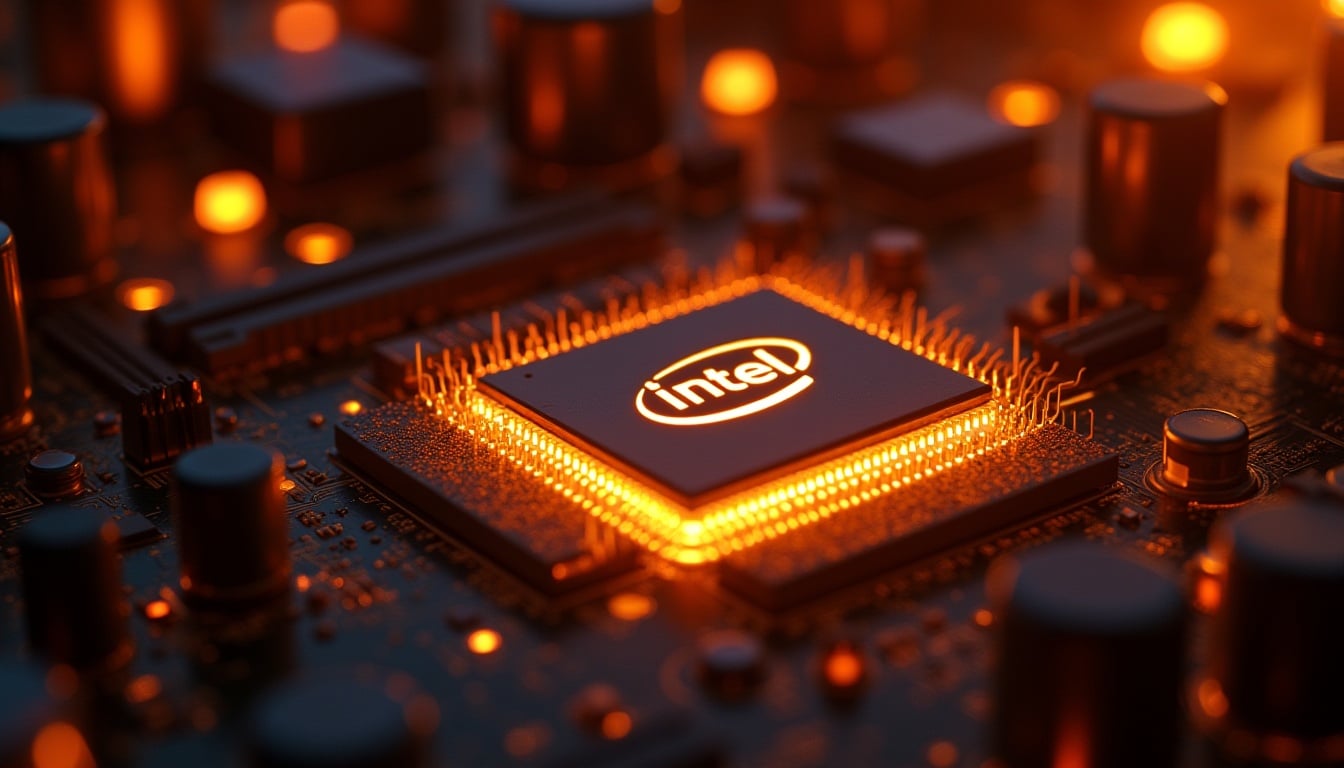Intel’s shares rose 2% after its Chief Financial Officer, David Zinsner, confirmed at Citi’s 2025 Global Technology, Media, and Telecommunications conference that the company will use U.S. government capital funds to pay off its outstanding debt before the end of the year. The executive also addressed concerns about the company’s reliance on TSMC, stating that the Taiwanese giant will remain a permanent strategic partner.
Public Funds in Exchange for Equity Stake
Zinsner recalled that, before the U.S. government took a 10% stake in Intel, the company still had $5.7 billion in grants pending, in addition to the $2.2 billion already disbursed under support programs like the CHIPS Act. According to the CFO, this money was in uncertain circumstances and subject to repayment clauses.
The government’s entry into Intel’s capital structure eliminated that uncertainty: the funds were provided upfront—except for the $3 billion from the Secure Enclave program, which will be paid over several years—and with a commitment that the government will vote in line with the board’s recommendations.
Financial Strategy: Divestments and Debt Reduction
In addition to federal funds, Intel plans to finalize in the coming weeks the sale of its Altera subsidiary, which will bring in an additional $3.5 billion. SoftBank’s investment, expected to close after regulatory approval later this quarter, will also contribute.
With these funds, Intel aims to settle $3.8 billion of debt maturing this year. “The goal is for all of it to mature and not be refinanced,” Zinsner stated, emphasizing the commitment to clean up the balance sheet after acknowledging that the company “spent ahead of demand in recent years, which hasn’t worked in our favor.”
Potential External Investment in Foundry Business
Asked about a possible spin-off of the foundry business (Intel Foundry), Zinsner did not rule out making it a subsidiary to facilitate external investments, although he clarified that “this will not happen in the short term because it’s not yet an investable business.”
If it happens, the sale limit would be less than 49%, due to the warrants held by the U.S. government.
Next-Generation Processes: 14A vs. 18A
The CFO expressed confidence in the development of 14A technology, despite recognizing it will be more costly than 18A. This is due to the use of High-NA EUV lithography equipment and additional processing steps resulting from increased complexity, which raises wafer costs.
While there is a risk of not attracting enough clients and thus not expanding capacity, Zinsner considered this unlikely, supporting the growing optimism of CEO Lip-Bu Tan.
TSMC: An Indispensable Partner
Regarding the relationship with Taiwan Semiconductor Manufacturing Company (TSMC), Zinsner was decisive:
“We will be putting products into TSMC, really forever. They are a great partner for us.”
Currently, 30% of Intel’s products are manufactured at TSMC, especially in lines like Lunar Lake and Arrow Lake. While this percentage will decrease in the future, it will remain significantly higher than a decade ago.
According to Zinsner, dependence “will fluctuate” depending on the performance of the company’s own foundry business and the nature of the products in production, but the link with TSMC is now structural.
Conclusion
The CFO’s message is clear: Intel is undergoing a financial cleanup supported by public funds and strategic divestments, while reinforcing its technological commitment with advanced processes and maintaining close ties with TSMC.
In a highly competitive environment with AMD, NVIDIA, and the fabless ecosystem itself, the company seems to be adopting a hybrid model: boosting its foundry business and, at the same time, relying on the Taiwanese leader to ensure volume and technological competitiveness.
Frequently Asked Questions (FAQ)
1. Why did the U.S. government take a stake in Intel?
To secure funding for strategic programs under the CHIPS Act and eliminate uncertainty around pending grants, in exchange for a 10% share of the company.
2. How much of Intel’s production is currently at TSMC?
About 30%, with plans to reduce this share, though it will still be higher than ten years ago.
3. What does the sale of Altera mean for Intel?
The divestment will raise $3.5 billion, which will be used to reduce debt and strengthen liquidity.
4. How do processes 14A and 18A differ?
14A is more complex and costly, using High-NA EUV lithography equipment and additional processing steps, but it promises significant improvements in performance and transistor density.
via: wccftech

